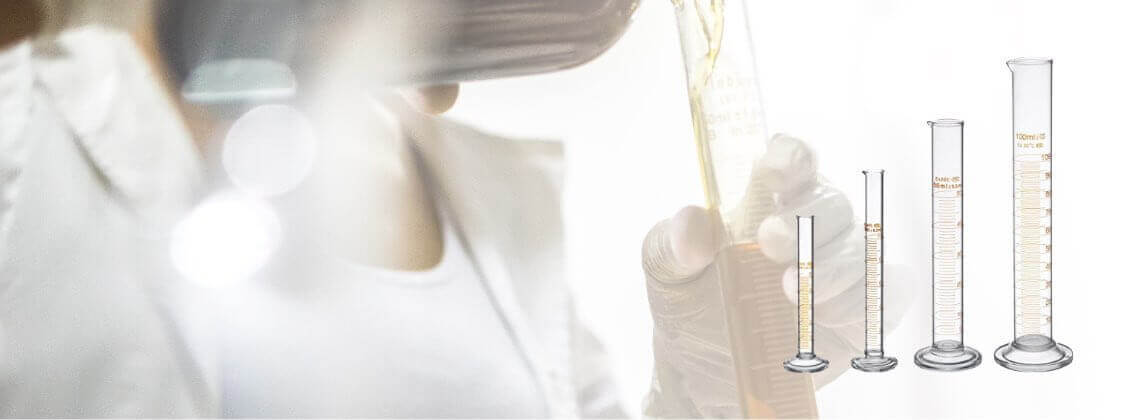The beaker and the graduated cylinder are bare essentials that every laboratory, classroom, and research facility needs to have on hand. In this comprehensive comparison, we will discover the main differences between beaker vs graduated cylinder, helping you understand how these lab tools differ and when to use each.
But while they are both laboratory essentials, they are not always interchangeable for applications that require precision and accuracy.
Beakers and graduated cylinders are designed for unique purposes. So they give different results (in terms of accurate measurements). Knowing what each tool is for and when to use it will help you obtain the best possible test results.
What are the key differences between a beaker vs graduated cylinder?
Beaker vs Graduated Cylinder are both essential laboratory equipment. But they differ in form, purpose, and accuracy.
Let’s discuss them in detail.
Form
Beakers are generally stout, flat-bottomed, and wide-mouth containers, while graduated cylinders are tall, narrow containers with flat bases.
Purpose
Graduated cylinders are made specifically for measuring the volume of liquids, while laboratory beakers are more versatile and can be used for mixing, stirring, and heating liquids.
Accuracy
Graduated cylinders have markings at every 1ml interval, reducing their error to 0.5 – 1% of their graduated scale. However, beaker marks are only approximate values, with measurement error that is 5% or more of their graduated scale.
You may also like: What is a Volumetric Flask: Sizes, Shapes, and Uses.
Understanding beaker vs graduated cylinder
Beakers are stout, flat-bottom containers that are used for holding, measuring, stirring, mixing, and heating liquids found in laboratory settings. They are important lab equipment for performing simple reactions.
Beakers generally have a height that’s around 1.5 to 2 times the width of their base diameter. They have wide mouths featuring a spout, which is a small pouring lip that makes it easy to pour liquids from the container.
Also, they have markings on their body for gauging how much liquid is inside the container.
Types of beakers
There are different types of beakers. They are generally classified based on materials of construction and shape.
Beaker types based on the material of construction are as follows:
Glass Beakers
Glass beakers are the most common beaker types. They are made of borosilicate glass that is chemical resistant and can tolerate temperatures of up to 400OC.
These classic laboratory glassware have reinforced rims, uniform wall thicknesses, and optimal clarity for sample observation.
Plastic Beakers
Plastic beakers are made of different plastic types. Polypropylene and polymethyl pentene are commonly used for their chemical resistance and excellent clarity, respectively.
Polytetrafluoroethylene (PTFE) is another plastic material commonly used as it is compatible with all chemical reactions and tolerates heat up to 400OC.
Plastic beakers tend to be lighter and less fragile than their glass counterparts.
Stainless Steel Beakers
Stainless steel breakers are great for heavy-duty applications as they are incredibly durable and can tolerate up to 550OC.
While they aren’t transparent, they are smooth, seamless, and corrosion-resistant, so they’re great for collecting and heating corrosive solvents and extracts.
Beaker types based on shapes and height include:
Tall form beaker
Tall-form beakers have heights that are double their diameter. They are also known as Berzelius beakers and are commonly used in titration.
Small form beaker
Small-form beakers have heights that are about 40% of their diameters. Their shortness makes them ideal for heating on a hot plate.
Flat beakers
Flat beakers are also called crystallizers. They have greater surface areas for more uniform heating. Unlike other beakers, they do not have flat scales on their walls.
Philip beakers
Philip beakers look like the Griffin beakers but have walls sliding and graduating toward the mouth.
Are beakers accurate?
A beaker looks like a measuring cup because they are graduated with volume measurements. However, they lack accuracy and do not give precise volume measurements.
